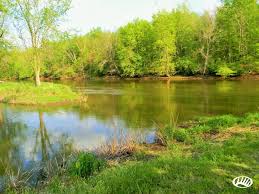About Us/FAQ’s

About the Kankakee and Yellow Rivers
The drainage area of the Kankakee River Basin, which includes the Yellow River Basin, covers 1.3 million acres in the eight counties represented on the Basin Development Commission. Approximately 1.1 million of these acres are dedicated to farming.
The Kankakee River originates to the southwest of South Bend, Indiana, and runs for 133 miles until it enters the Illinois River in Illinois. Until the late Nineteenth Century, the river was approximately 240 miles in total length. Thereafter, large scale drainage efforts to deepen and straighten the channel established its current length during World War I. The river forms the southern boundaries of Lake, Porter, and LaPorte Counties and the northern borders of Newton, Jasper, and Starke Counties.
The Yellow River begins in southeastern St. Joseph County and follows a 62-mile course through Marshall and Starke Counties. It enters the Kankakee River approximately ten miles to the west of Knox, Indiana.
In 1933, the State of Indiana reconverted the area near the confluence of the Kankakee and Yellow Rivers to marshland. Adjacent lands currently includes residential areas, large agricultural parcels, designated wetlands, forests, and lands under Department of Natural Resources management. In addition to serving agricultural, commercial, and municipal needs, the rivers’ ecosystems and physical characteristics continue to provide significant opportunities for fishing, hunting, recreational boating, and other natural enjoyment.
Mission Statement
The Kankakee River Basin and Yellow River Basin Development Commission advances Northwest Indiana’s safety, economic prosperity, and quality of its natural resources.
Vision Statement
The Kankakee River Basin and Yellow River Basin Development Commission is building a region where its residents, farms, and communities prosper in concert with one of the nation’s most unique natural environments.
FREQUENTLY ASKED QUESTIONS
Who started the Kankakee River Basin and Yellow River Basin Development Commission?
The Indiana General Assembly passed legislation to form the Commission in 2019. Once Gov. Eric Holcomb signed the measure into law, the Commission came into being on July 1, 2019.
What are the powers and duties of the Commission?
Indiana Code 14-13-9-18 gives the Commission the ability to conduct 1) bank stabilization; 2) tree removal; 3) the construction and operation of sand traps; 4) channel reconstruction; 5) sediment removal; 6) acquisition, construction, and maintainenance of access roads to levees and the channel of each river; and 7) other flood control actions considered necessary. The Commission may acquire interests in land, including easements, for the commission’s use in providing flood storage and constructing levees or other flood control improvements. Any acquisitions are completely voluntary on the seller’s part. The law also grants the Commission an exclusive, 75-foot easement from the top of each bank of the Kankakee and Yellow Rivers to conduct flood control and sediment management activities.
Does the Commission have a long-term plan to address flooding and erosion?
Yes. In September 2019, the Commission adopted a 40-year plan to address over a century of mounting flood and erosion problems. The state of Indiana funded the plan’s development, and our neighbors in Illinois contributed to a share of the total cost. The full document is available for review at kankakeeandyellowrivers.org.
How are we paying for flood control and sediment management projects?
In 2019, the state of Indiana contributed $2.3 million to begin work. After May 2021, capital projects will be funded by a limited annual assessment of properties within the Kankakee and Yellow River Basins. Under Indiana Code 14-13-9-21, these assessments are listed as $7 per residential parcel; $1 per farm acre; $2 per undeveloped commercial acre; $50 per commercial parcel; and $360 per industrial or utility parcel. Funds may only be used for capital investments, and Indiana workers and businesses are granted preferences for the work.
Counties may choose to enact funding of their own as a substitute for these assessments. Otherwise, the amounts go into effect during the middle of 2021.